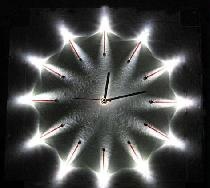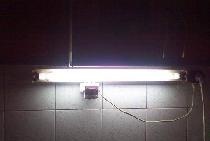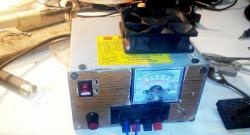Lamps.
But here I must say, lucky! Previously, I only came across gas-discharge indicators, for powering which, take out and put in 180V! Everything here is very convenient, you can use 5V power for power supply (strictly speaking, no more than 4.5V, but more on that later), i.e. the same line that is used to operate the main chips.
The lamp is a vacuum flask containing eight filaments. Thus, IV-9 has a common output and eight segment ones. To display any information, it is necessary to “power” the general and corresponding segment pins. The polarity of the connection does not matter.In my case, I connected pin 1 to the power positive (the supply voltage, in my circuit, changes to adjust the brightness of the lamps) and connected the segment pins to ground.


Now about lamp control. The customer insisted on static indication, therefore, we will have a “bunch” of control signals (7 pins * 4 lamps). To increase the number of pins, I used four 74HC595 shift registers, the pins of which are connected to four ULN2003 chips. The ULN2003 microcircuit is a set of seven transistor switches. Each transistor switch has a limiting resistor in its base, so you can safely connect the outputs from the shift register directly to the control inputs of the uln.
Scheme.
The main workhorse is mega8. Its work consists of polling either a temperature sensor - DS18B20 or a real-time clock DS1307 and outputting information to the lamps by writing the required array to shift registers. Also, when one of the four buttons is activated, the corresponding digit in hours or minutes changes. Seconds are reset to zero when hours or minutes are changed. When you press the first and fourth buttons simultaneously, the device goes into temperature display mode. For details, you can watch the video. All four buttons “sit” on one interrupt, after which it is triggered, it is determined which button is pressed, here is an example of such an implementation:

Device diagram:
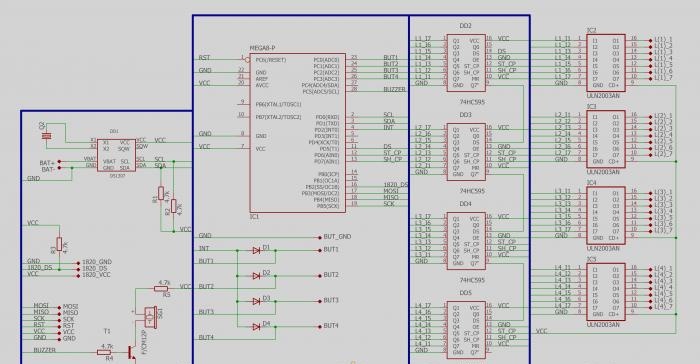
This is the first part of the work in which there is no adjustment of the brightness of the lamps - they burn at “full”. All device power is 5V.In this version, the clock can even be powered from a USB port! The diagram also does not show the lamps; to connect them, you need to connect their anodes to the power supply plus, and connect the segment terminals through current-limiting resistors (the segment current should not exceed 19 mA) to the terminals L(1)_1.... L(4)_7. When adjusting the brightness, we connect the anodes of the lamps and pins number 9 of the ULN2003 microcircuits not to the power plus, but to the output of the power control circuit.
Circuit for brightness adjustment:
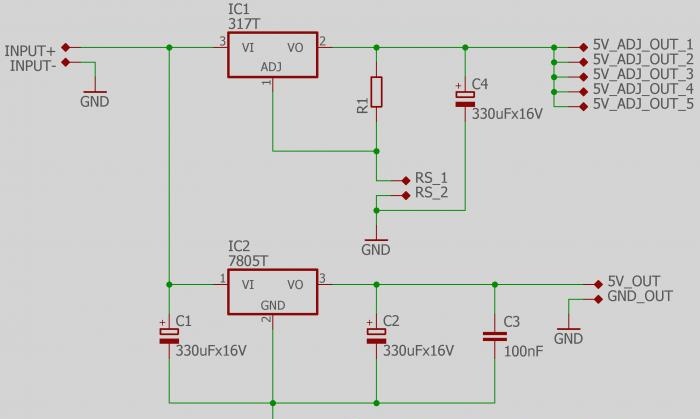
We apply a constant voltage of 7-9V to the input (INPUT+;INPUT-). The 7805 linear regulator regulates the voltage to 5V, which is used to power the microcontroller, real-time clock, shift registers and temperature sensor.
Linear stabilizer LM317 - used to implement brightness control. With ratings R1-3.9kOhm, and RS_1,RS-2 a 10kOhm variable resistor, the voltage 5V_ADJ_OUT will vary depending on the resistance of the variable resistor from 2.5 to 4.9V. You need to install a small radiator on the LM317; in literally 10 minutes I made one like the one in the photo, which copes with cooling quite well. Material – a small part from the CD-rom case:
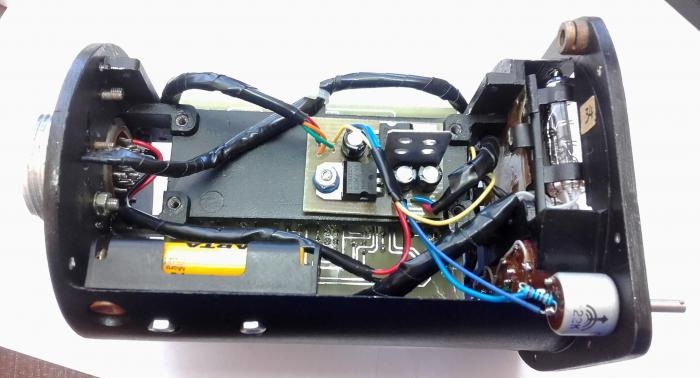
The photo shows the output of the temperature sensor and the battery compartment for the DS1307 real-time clock.
Now the execution.
Frame:
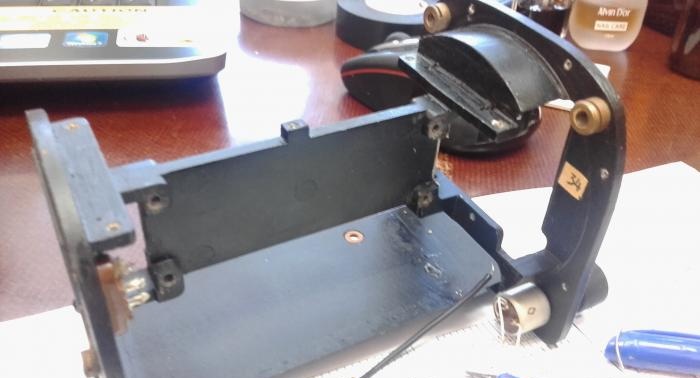
I lengthened the leads from the lamps and wound them into pigtails and returned them to their original place:

Control board (attached to its original location):
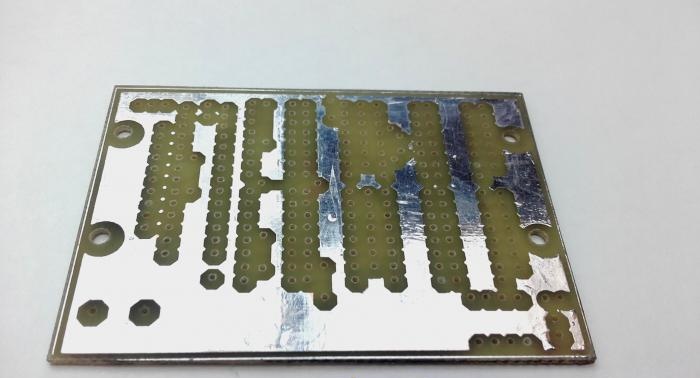

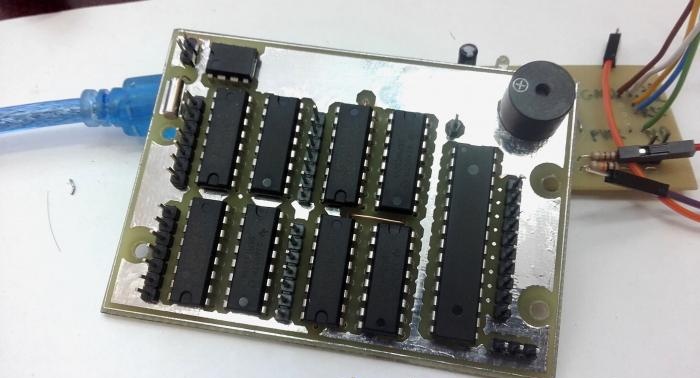
Mounting the board and connecting the lamps:

As a result:

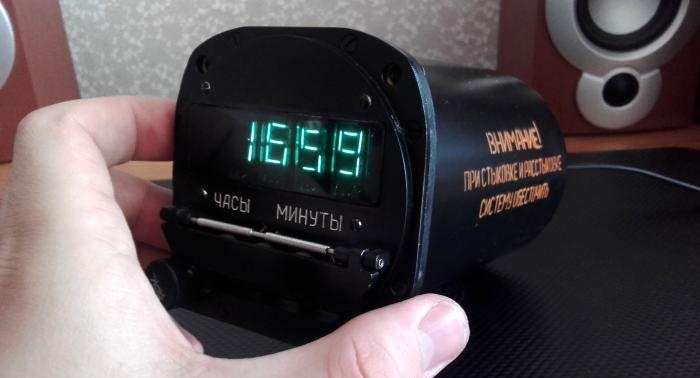
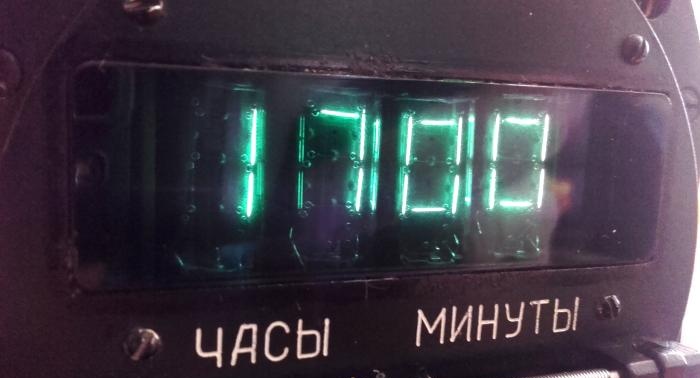
Download firmware and boards:
Attention! You do not have permission to view hidden text.


